
The 101st Airborne Division (Air Assault) ("Screaming Eagles") is a light infantry division of the United States Army that specializes in air assault operations. It can plan, coordinate, and execute multiple battalion-size air assault operations to seize terrain. These operations can be conducted by mobile teams covering large distances, fighting behind enemy lines, and working in austere environments with limited or degraded infrastructure. Its unique battlefield mobility and high level of training have kept it in the vanguard of U.S. land combat forces in recent conflicts: for example, foreign internal defense and counterterrorism operations in Iraq, in Afghanistan in 2015–2016, and in Syria, as part of Operation Inherent Resolve in 2018–2021.

Colonel David Haskell Hackworth was a United States Army officer and journalist, who was decorated in both the Korean War and Vietnam War. Hackworth is known for his role in the formation and command of Tiger Force, a military unit from the 101st Airborne Division that used guerrilla warfare tactics against Viet Cong in South Vietnam.
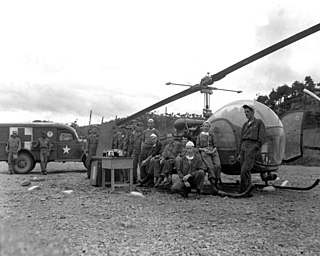
Mobile Army Surgical Hospitals (MASH) were U.S. Army field hospital units conceptualized in 1946 as replacements for the obsolete World War II-era Auxiliary Surgical Group hospital units. MASH units were in operation from the Korean War to the Gulf War before being phased out in the early 2000s. Each MASH unit had 60 beds, as well as surgical, nursing, and other enlisted and officer staff available at all times. MASH units filled a vital role in military medicine by providing support to army units upwards of 10,000 to 20,000 soldiers. These units had a low mortality rate compared to others, as the transportation time to hospitals was shorter, resulting in fewer patients dying within the "Golden Hour", the first hour after an injury is first sustained, which is referred to in trauma as the "most important hour". The U.S. Army deactivated the last MASH unit on February 16, 2006, and the successors to Mobile Army Surgical Hospitals are combat support hospitals.

Harold Keith "Johnny" Johnson was a United States Army general who served as Chief of Staff of the United States Army from 1964 to 1968. Regarded as a premier tactician, Johnson became skeptical that the level of resources given to the Vietnam War, much of which went into 'find, fix, and destroy the big main force units' operations, could deliver victory. Johnson came to believe that the Communist forces held a trump card, because they controlled whether there were engagements with U.S. forces, giving an option to simply avoid battle with U.S. forces if the situation warranted it.

The National Society of Pershing Rifles is a military-oriented honor society for college-level students founded in 1894 as a drill unit at the University of Nebraska–Lincoln. It is the oldest continuously operating US college organization dedicated to military drill. Originally named Varsity Rifles, members renamed the organization in honor of their mentor and patron, Lieutenant John J. Pershing, upon his departure from the university in 1895.
Fort Eustis is a United States Army installation in Newport News, Virginia. In 2010, it was combined with nearby Langley Air Force Base to form Joint Base Langley–Eustis.

Jack Howard Jacobs is a retired colonel in the United States Army and a Medal of Honor recipient for his actions during the Vietnam War. He serves as a military analyst for NBC News and MSNBC and previously worked as an investment manager.
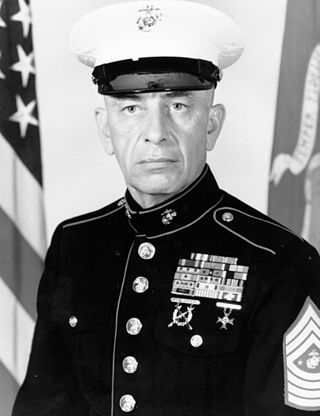
Henry H. Black was a United States Marine who served as the 7th Sergeant Major of the Marine Corps from 1975 to 1977.

Victor Eugene "Gene" Renuart Jr. is a retired United States Air Force four-star general. His last military assignment was as the commander of United States Northern Command and North American Aerospace Defense Command from March 23, 2007, to May 19, 2010. Prior to that, he served as director of strategic plans and policy, the Joint Staff. Renuart retired from the Air Force on July 1, 2010, after over 39 years of service.

Keith Lincoln Ware was a United States Army major general, and a Medal of Honor recipient of World War II. Ware was killed in action in 1968 while commanding the 1st Infantry Division during the Vietnam War.
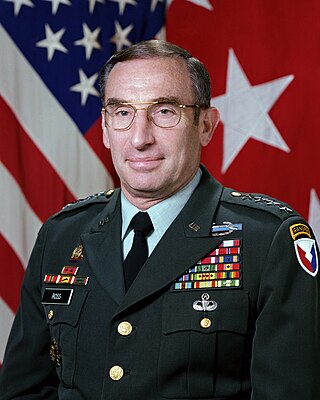
General Jimmy Douglas Ross was a United States Army four-star general and member of the board of two corporations.
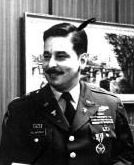
Raúl G. Villaronga was a United States Army officer who was the first Puerto Rican mayor of a Texas city. He served as mayor of Killeen, Texas, for three consecutive terms, from 1992 to 1998.
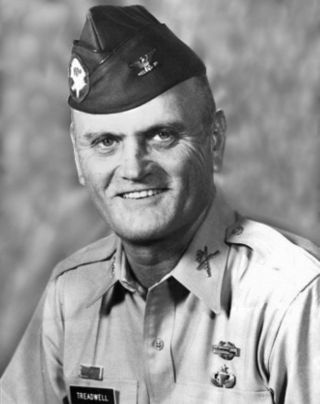
Jack LeMaster Treadwell was a United States Army colonel and a recipient of the United States military's highest decoration for valor—the Medal of Honor—for his actions in World War II. At the time of his retirement, Treadwell was believed to be the most decorated man in the United States Armed Forces.

Simmons Army Airfield is a military use airport located in Cumberland County, North Carolina, United States. It is located on the southeast portion of Fort Liberty and supports the aviation needs of the XVIII Airborne Corps, the 82nd Airborne Division, Special Operations, U.S. Army Reserve and U.S. National Guard aviation units.
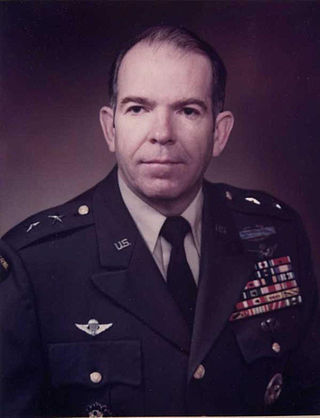
Benjamin L. Harrison is a former United States Army officer who contributed to the tactics of modern airmobile warfare involving the integration of helicopters with infantry and armor forces for both rapid deployment and subsequent support. General Harrison was an early advocate, theorist and practitioner of these tactics, commonly referred to as "air assault." They are analogous to the revolutionary use of armor and air support with infantry in blitzkrieg warfare in early World War II, and are critical to modern military doctrine as practiced in Vietnam, Iraq and Afghanistan.

Thomas V. Draude is a retired United States Marine Brigadier General. Draude retired in 1993 after 31 years of military service. Since retirement, Draude served with USAA and the Marine Corps University Foundation. He is currently an adjunct faculty member of University of South Florida in Tampa, Florida, teaching on courses on The Vietnam War and U.S. Military War Doctrine.

Arthur Eugene "Gene" Dewey was United States Assistant Secretary of State for Population, Refugees, and Migration from 2002 to 2005.
Benjamin King is an American author, military historian and noted war gamer. He served as a Field Artillery officer during the Vietnam War and later served as an historian for the US Army. He is best known for his historical novels A Bullet for Stonewall and A Bullet for Lincoln.

George Allen Crocker is a former United States Army Lieutenant General. He was one of the army officers profiled in Rick Atkinson's book The Long Gray Line: The American Journey of West Point's Class of 1966, published in 1989.
Lieutenant Colonel Hugh L. Mills Jr. is a retired United States Army officer who served in the Vietnam War.















